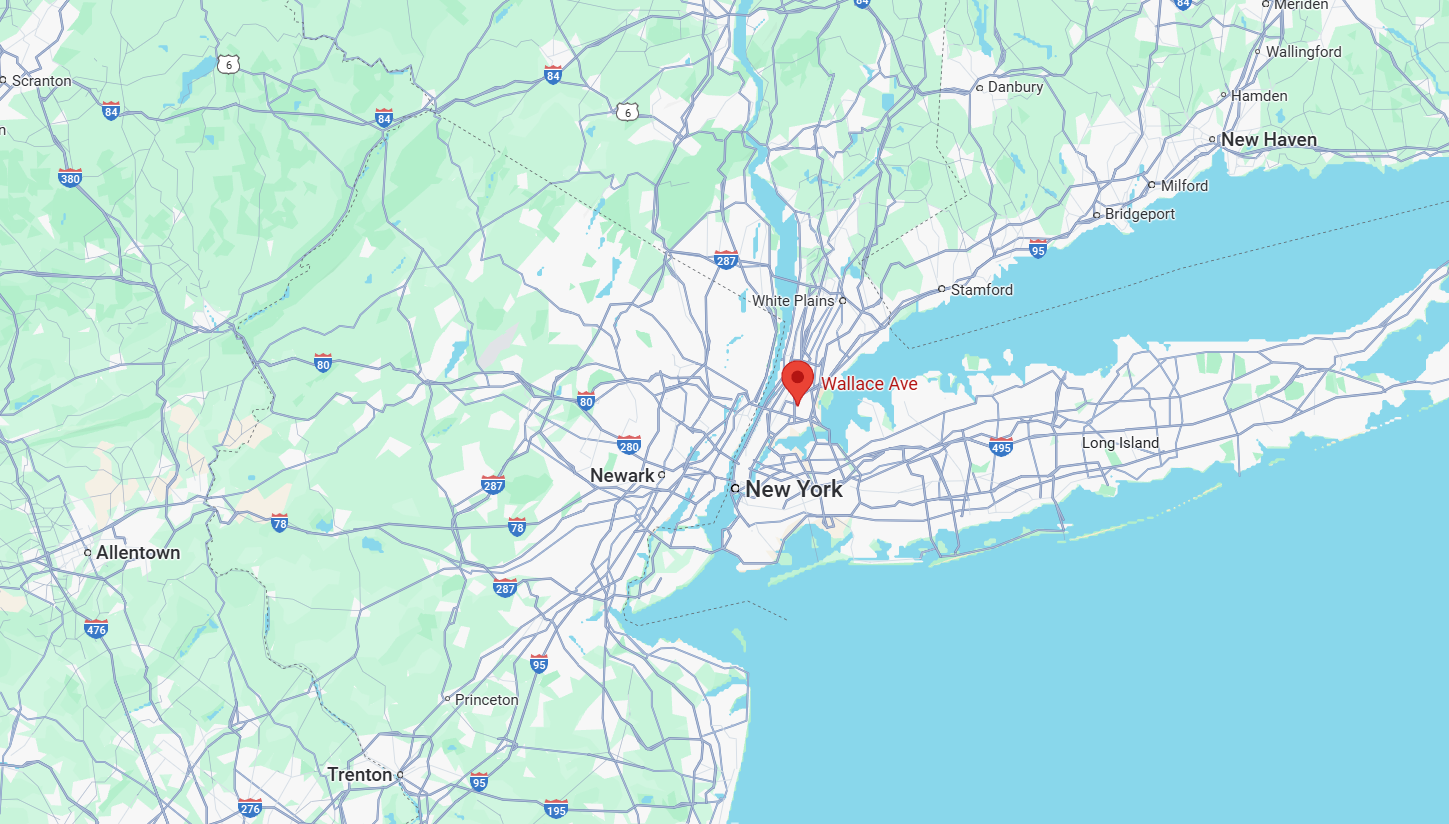Words From The 2010s So Lit We Should Bring Them Back
The 2010s were the era of Instagram, Beyonce’s Lemonade album, and arguing about whether a viral photo showed a blue dress or a white one. The decade may not seem like that long ago, but a lot has changed since then, including many parts of our language.
Vocabulary evolves quickly, especially when you’re talking about the words associated with slang and pop culture. Take yeet, for example. One minute, everyone was saying it. The next? Well, it might be hard to recall the last time you’ve heard it.
The good news is that the coolest things from previous decades almost always come back in style again. 2010s nostalgia is having a moment, and we’re taking that opportunity to look back at some of the defining words of the decade. Here are 16 2010s slang words that might be ready for a comeback.
bae
Remember bae? In the 2010s, this term of endearment was all over the place. The word, which is “an affectionate term used to address or refer to one’s girlfriend, boyfriend, spouse, etc.,” gained popularity in 2012, thanks to a viral tweet. The term originated in Black culture, most likely as a shortened form of babe or baby. It went on to achieve meme status before fading into the background at the start of the next decade.
catfish
Catfish isn’t just a type of fish. It’s also a verb that means “to deceive, swindle, etc., by assuming a false identity or personality online.” This slang meaning of catfish took over in 2010 with the release of Catfish by Henry Joost and Ariel Schulman. The documentary told the story of a man who was romantically duped by a stranger online. Catfish is still used to describe this kind of trickery, but the word is less common than it used to be, perhaps because knowledge of this type of dishonesty is more widespread.
first world problem
Oh, your favorite slang went out of style? Sounds like a first world problem. (Just kidding.) In the 2010s, first world problem emerged as a facetious way of pointing out a “fairly minor problem, frustration, or complaint associated with a relatively high standard of living, as opposed to serious problems associated with poverty.” The phrase dates back to the late ’70s, but it wasn’t seen online until around 2005. It got its start as a hashtag on Twitter and later became one of the go-to phrases of the 2010s.
yeet
Yeet began as the name of a popular dance in Black internet culture. By the mid-2010s, its use in viral videos had solidified its place as “an exclamation of excitement, approval, surprise, or all-around energy.” In 2018, yeet was voted the American Dialect Society’s 2018 Slang/Informal Word of the Year. Perhaps it’s because life during a pandemic hasn’t given us many reasons to say it, but yeet hasn’t held the same level of popularity in the years since its peak.
stan
These days, it’s popular for fans of musicians or actors to assume a group name related to their favorite celebrity, like Taylor Swift’s “swifties.” But in the 2010s, these groups were usually called stans. A stan is “an overly enthusiastic fan, especially of a celebrity.” The term originated in the early 2000s as a blend of stalker and fan, influenced by the rapper Eminem’s 2000 song “Stan.” Luckily, the term is mostly used in a lighthearted way.
humblebrag
We don’t mean to humblebrag, but we just have so many classic 2010s words to share with you. A humblebrag is “a statement intended as a boast or brag but disguised by a humble apology, complaint, etc.” The term is credited to writer and TV producer Harris Wittels, who created the Twitter account @Humblebrag in 2010 to showcase real-life examples of the act. It’s likely that many people still humblebrag online, so maybe it’s time to bring back the term.
slaps
If you say “this slaps” when you hear an awesome new song, you probably picked up your slang during the 2010s. Slaps is a slang verb meaning “to be excellent or amazing.” Believe it or not, slaps has been used to mean “first-rate” since at least the mid-1800s. It may not be as popular at the moment, but we have a feeling it will come back around again.
on fleek
For a brief moment in time, anything impressive or stylish was said to be on fleek. Now? Well, on fleek isn’t quite as on fleek as it used to be. Fleek means “flawlessly styled, groomed, etc.; looking great.” It’s typically used to describe someone’s clothing or appearance. The word was coined in its current sense by internet user Kayla Newman in 2014, and quickly became one of the most popular slang terms of the 2010s. Like a lot of popular slang, it may have existed in Black culture before it became widespread.
lit
Looking for a word that means “amazing, awesome, or cool.” How about lit? This 2010s word joined the ranks of cool, rad, and other terms to describe things people find great. Though its slang usage was most popular in the 2010s, lit has existed since at least 1895 as a way of saying “intoxicated.” It may not be new and trending, but this word isn’t likely to go away any time soon.
milkshake duck
Before canceled became everyone’s go-to word for internet controversies, there was milkshake duck. This phrase describes “a person (or thing) who becomes popular on the internet for a positive reason, but as their popularity takes off and people dig into their past, they become an object of outrage.” Milkshake duck is taken from a 2016 tweet by Australian cartoonist Ben Ward. The phrase may be less common than it once was, but the phenomenon it describes is still a major part of life online.
slay
Are we finally ready to slay some more? Slay means “to do something spectacularly well, especially when it comes to fashion, artistic performance, or self-confidence.” Slay being used as a way of saying “looking fashionable” can be traced back to the 1800s, but its usage in the 2010s is more closely linked to Black, Latinx, and queer ball culture. Whether it’s great clothes, hair, dancing, or something else, slay is a way of saying someone is killing it.
fire
In the 2010s, fire was frequently used as an adjective. Saying something was fire meant it was “cool, excellent, exciting, etc.” Fire can also be shortened to fya or fiyah, the origins of which can be traced to Black English. The term may have burned out towards the end of the decade, but we’re still holding a torch for this one. See what we did there?
fam
There’s nothing we love more than reminiscing about words with the fam. That’s you, of course. Fam means “a close friend or group of friends thought of as family.” Though the word is a shortened form of family, it generally describes chosen friends rather than actual family members. It became popular on Twitter and other social media platforms in the mid-2010s.
thirst
A glass of water won’t cure this type of thirst. Those who were teens and young adults in the 2010s might remember thirst as a slang term meaning “to have a strong desire.” In other words, thirsting for someone means you find them attractive. This usage also spawned other phrases, such as thirst trap, which is a social media post shared to elicit sexual attention. Mostly, we’re just thirsty for this word to make a comeback.
TFW
TFW stands for that feeling when. It was the basis of a popular 2010s meme that people used to express their emotions in relatable or unrelatable situations. For example, “TFW you just got cozy in bed but you need to use the bathroom.” The exact origins of the meme and corresponding phrase aren’t known, but it’s been in use on the internet since before 2018.
yaass
Can we get a yaaas for this final word? This interjection is an alternative form of yes, and it indicates ”a strong expression of excitement, approval, agreement, etc.” Most often, it’s accompanied by queen or kween, as in yaaas kween, but it can also be used on its own. This phrase originates in drag culture, where it’s commonly said in response to someone’s excellent style.
Copyright 2025, AAKKHRA, All Rights Reserved.
Words From The 2010s So Lit We Should Bring Them Back
The 2010s were the era of Instagram, Beyonce’s Lemonade album, and arguing about whether a viral photo showed a blue dress or a white one. The decade may not seem like that long ago, but a lot has changed since then, including many parts of our language.
Vocabulary evolves quickly, especially when you’re talking about the words associated with slang and pop culture. Take yeet, for example. One minute, everyone was saying it. The next? Well, it might be hard to recall the last time you’ve heard it.
The good news is that the coolest things from previous decades almost always come back in style again. 2010s nostalgia is having a moment, and we’re taking that opportunity to look back at some of the defining words of the decade. Here are 16 2010s slang words that might be ready for a comeback.
bae
Remember bae? In the 2010s, this term of endearment was all over the place. The word, which is “an affectionate term used to address or refer to one’s girlfriend, boyfriend, spouse, etc.,” gained popularity in 2012, thanks to a viral tweet. The term originated in Black culture, most likely as a shortened form of babe or baby. It went on to achieve meme status before fading into the background at the start of the next decade.
catfish
Catfish isn’t just a type of fish. It’s also a verb that means “to deceive, swindle, etc., by assuming a false identity or personality online.” This slang meaning of catfish took over in 2010 with the release of Catfish by Henry Joost and Ariel Schulman. The documentary told the story of a man who was romantically duped by a stranger online. Catfish is still used to describe this kind of trickery, but the word is less common than it used to be, perhaps because knowledge of this type of dishonesty is more widespread.
first world problem
Oh, your favorite slang went out of style? Sounds like a first world problem. (Just kidding.) In the 2010s, first world problem emerged as a facetious way of pointing out a “fairly minor problem, frustration, or complaint associated with a relatively high standard of living, as opposed to serious problems associated with poverty.” The phrase dates back to the late ’70s, but it wasn’t seen online until around 2005. It got its start as a hashtag on Twitter and later became one of the go-to phrases of the 2010s.
yeet
Yeet began as the name of a popular dance in Black internet culture. By the mid-2010s, its use in viral videos had solidified its place as “an exclamation of excitement, approval, surprise, or all-around energy.” In 2018, yeet was voted the American Dialect Society’s 2018 Slang/Informal Word of the Year. Perhaps it’s because life during a pandemic hasn’t given us many reasons to say it, but yeet hasn’t held the same level of popularity in the years since its peak.
stan
These days, it’s popular for fans of musicians or actors to assume a group name related to their favorite celebrity, like Taylor Swift’s “swifties.” But in the 2010s, these groups were usually called stans. A stan is “an overly enthusiastic fan, especially of a celebrity.” The term originated in the early 2000s as a blend of stalker and fan, influenced by the rapper Eminem’s 2000 song “Stan.” Luckily, the term is mostly used in a lighthearted way.
humblebrag
We don’t mean to humblebrag, but we just have so many classic 2010s words to share with you. A humblebrag is “a statement intended as a boast or brag but disguised by a humble apology, complaint, etc.” The term is credited to writer and TV producer Harris Wittels, who created the Twitter account @Humblebrag in 2010 to showcase real-life examples of the act. It’s likely that many people still humblebrag online, so maybe it’s time to bring back the term.
slaps
If you say “this slaps” when you hear an awesome new song, you probably picked up your slang during the 2010s. Slaps is a slang verb meaning “to be excellent or amazing.” Believe it or not, slaps has been used to mean “first-rate” since at least the mid-1800s. It may not be as popular at the moment, but we have a feeling it will come back around again.
on fleek
For a brief moment in time, anything impressive or stylish was said to be on fleek. Now? Well, on fleek isn’t quite as on fleek as it used to be. Fleek means “flawlessly styled, groomed, etc.; looking great.” It’s typically used to describe someone’s clothing or appearance. The word was coined in its current sense by internet user Kayla Newman in 2014, and quickly became one of the most popular slang terms of the 2010s. Like a lot of popular slang, it may have existed in Black culture before it became widespread.
lit
Looking for a word that means “amazing, awesome, or cool.” How about lit? This 2010s word joined the ranks of cool, rad, and other terms to describe things people find great. Though its slang usage was most popular in the 2010s, lit has existed since at least 1895 as a way of saying “intoxicated.” It may not be new and trending, but this word isn’t likely to go away any time soon.
milkshake duck
Before canceled became everyone’s go-to word for internet controversies, there was milkshake duck. This phrase describes “a person (or thing) who becomes popular on the internet for a positive reason, but as their popularity takes off and people dig into their past, they become an object of outrage.” Milkshake duck is taken from a 2016 tweet by Australian cartoonist Ben Ward. The phrase may be less common than it once was, but the phenomenon it describes is still a major part of life online.
slay
Are we finally ready to slay some more? Slay means “to do something spectacularly well, especially when it comes to fashion, artistic performance, or self-confidence.” Slay being used as a way of saying “looking fashionable” can be traced back to the 1800s, but its usage in the 2010s is more closely linked to Black, Latinx, and queer ball culture. Whether it’s great clothes, hair, dancing, or something else, slay is a way of saying someone is killing it.
fire
In the 2010s, fire was frequently used as an adjective. Saying something was fire meant it was “cool, excellent, exciting, etc.” Fire can also be shortened to fya or fiyah, the origins of which can be traced to Black English. The term may have burned out towards the end of the decade, but we’re still holding a torch for this one. See what we did there?
fam
There’s nothing we love more than reminiscing about words with the fam. That’s you, of course. Fam means “a close friend or group of friends thought of as family.” Though the word is a shortened form of family, it generally describes chosen friends rather than actual family members. It became popular on Twitter and other social media platforms in the mid-2010s.
thirst
A glass of water won’t cure this type of thirst. Those who were teens and young adults in the 2010s might remember thirst as a slang term meaning “to have a strong desire.” In other words, thirsting for someone means you find them attractive. This usage also spawned other phrases, such as thirst trap, which is a social media post shared to elicit sexual attention. Mostly, we’re just thirsty for this word to make a comeback.
TFW
TFW stands for that feeling when. It was the basis of a popular 2010s meme that people used to express their emotions in relatable or unrelatable situations. For example, “TFW you just got cozy in bed but you need to use the bathroom.” The exact origins of the meme and corresponding phrase aren’t known, but it’s been in use on the internet since before 2018.
yaass
Can we get a yaaas for this final word? This interjection is an alternative form of yes, and it indicates ”a strong expression of excitement, approval, agreement, etc.” Most often, it’s accompanied by queen or kween, as in yaaas kween, but it can also be used on its own. This phrase originates in drag culture, where it’s commonly said in response to someone’s excellent style.
Copyright 2025, AAKKHRA, All Rights Reserved.






















